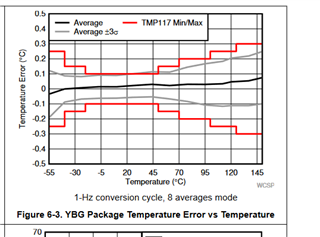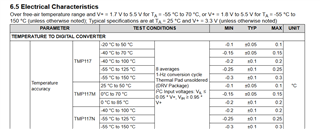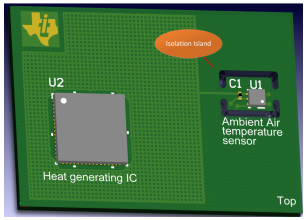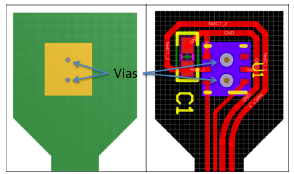We working on a home indoor camera and need to measure the ambient temperature inside a home. In our device we have TMP117 temperature sensor and it will measure the temperature of a metal part inside the device. TMP117 IC top will touch the metal by a thermal pad. The change in external ambient will change the metal part temperature. So by correlating the result we can measure the external ambient temperature.
But we want a higher accurate measurements and measurement time is not a issue here. Below shown is the accuracy graph mentioned for TMP117

And a table also mentioned at sec 6.5 for accuracy

I want to know the max possible accuracy of TMP117 for the temperature range.
Can you confirm the max possible accuracy of TMP117 only mentioned in above table. Or we can improve that by averaging?
We can see a Average plot and 3 sigma plot on graph. 3 sigma plot should be the distribution of accuracy for each time measurement. So 3 sigma should be the real accuracy of the device right?. But the dark black color plot have higher accuracy than 3 sigma plot. So is the accuracy really increased here or on the next time measurement the dark black color plot position will be change but it will be definitely inside 3 sigma plot?
P/N we using is TMP117AIYBG. We want to reduce the thermal conduction from board and need to focus temperature coming on the top of the IC. From the thermal resistance values found BGA package version of TMP117 will be good and that's why selected TMP117AIYBG.




